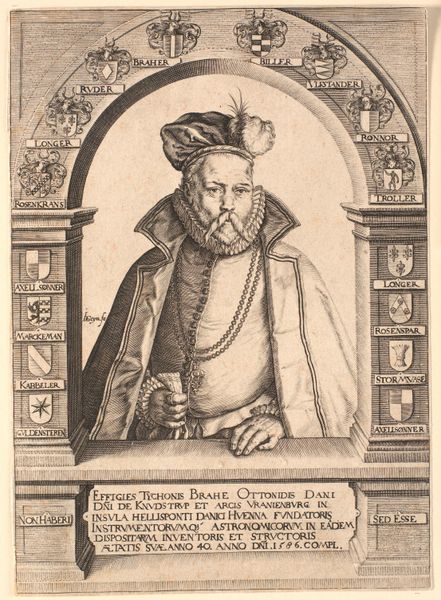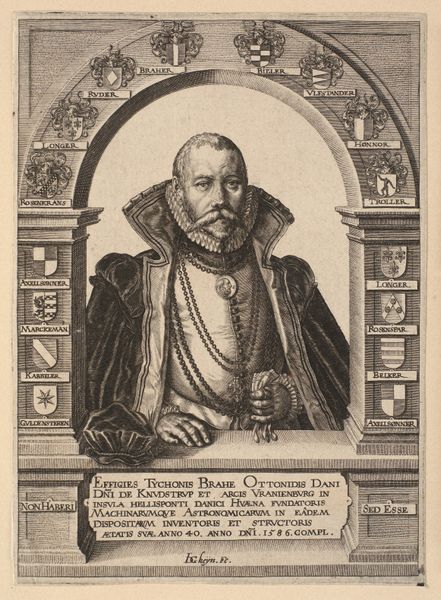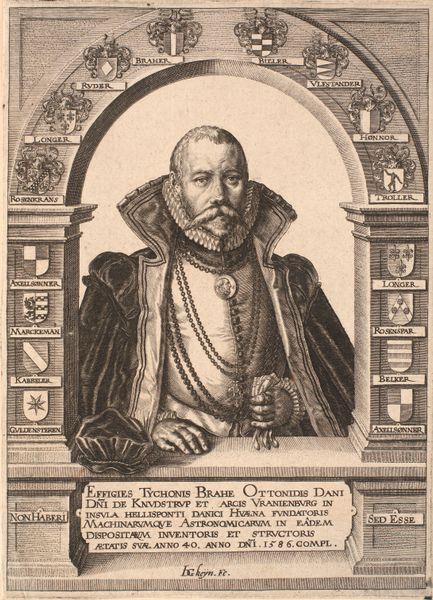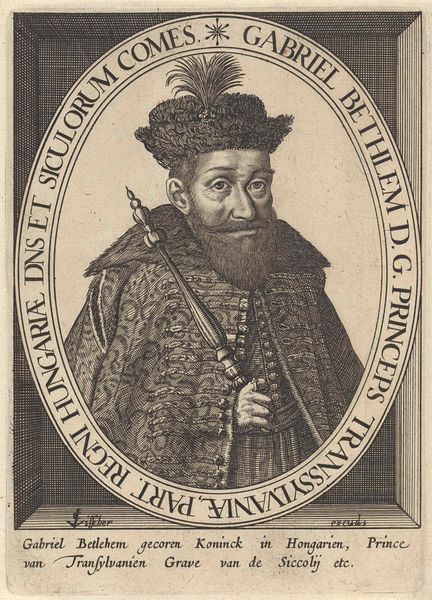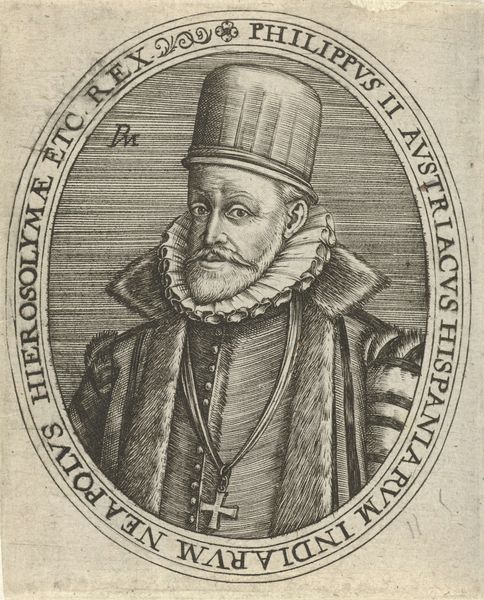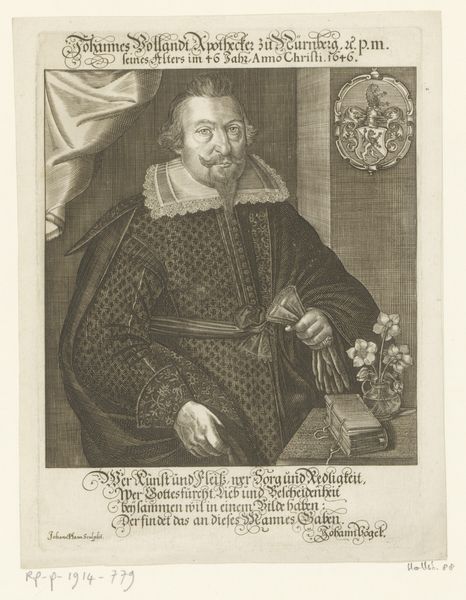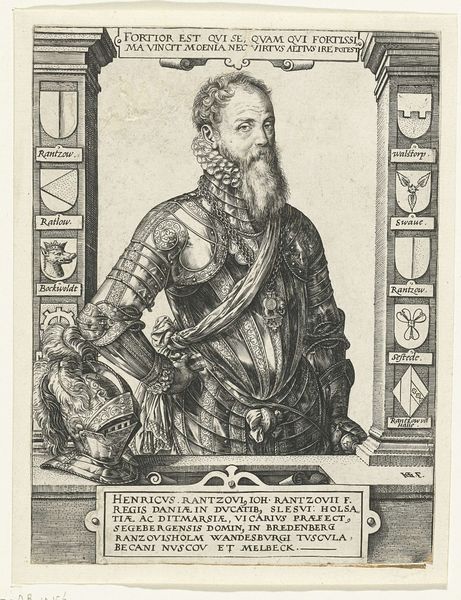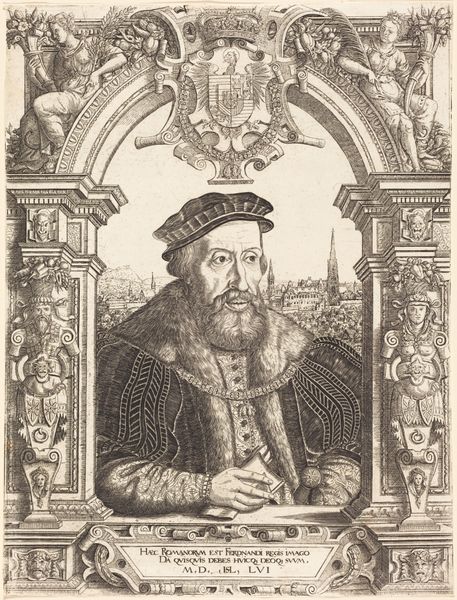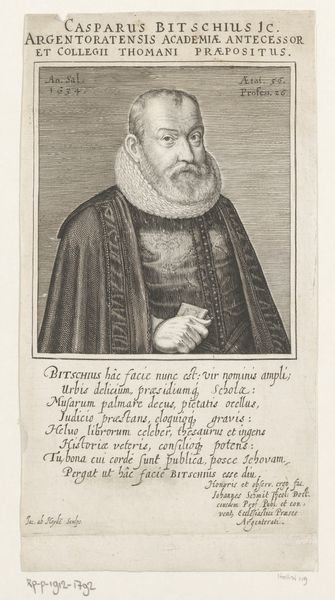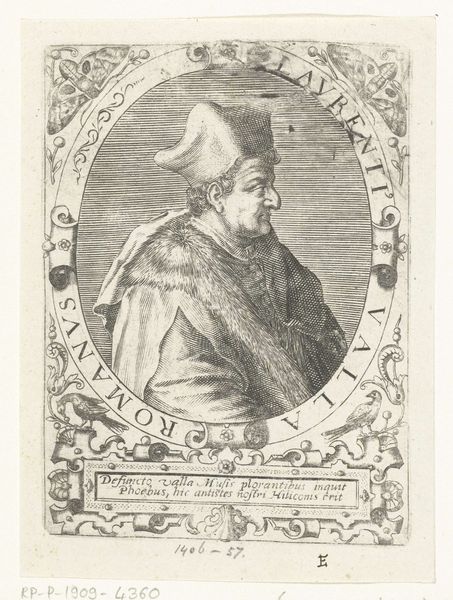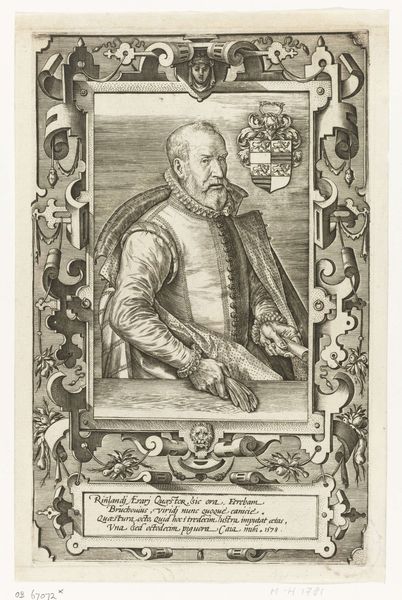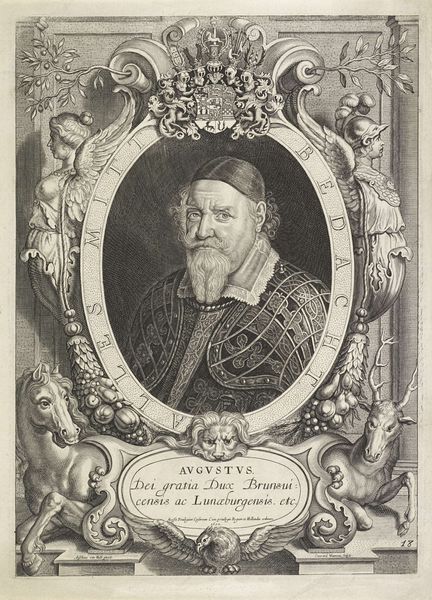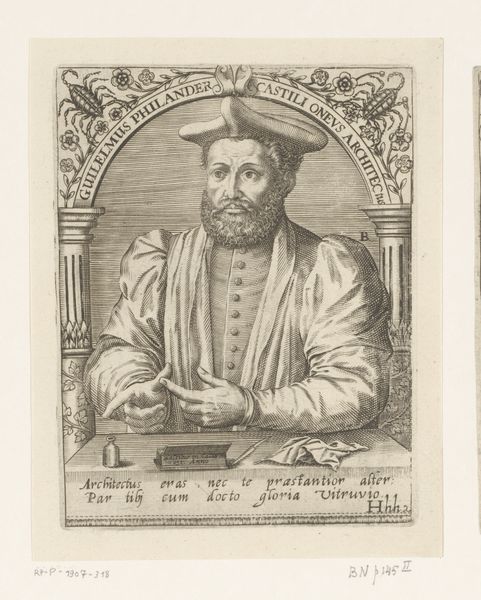
print, engraving
#
portrait
# print
#
old engraving style
#
caricature
#
portrait drawing
#
history-painting
#
academic-art
#
engraving
Dimensions: height 187 mm, width 136 mm
Copyright: Rijks Museum: Open Domain
Curator: Here in Gallery 12, we have an engraving titled "Portret van Tycho Brahe." The print, rendered sometime between 1630 and 1680, is currently held in the Rijksmuseum collection, and it was created by Jacob van Meurs. Editor: It feels incredibly ornate, doesn't it? A sort of scholarly formality. Though, if I'm honest, the almost caricature-like features of Brahe do make me stifle a little giggle. Do you think that was intentional? Curator: Well, given the era and the nature of portraiture, it is unlikely to be a full-blown caricature as we understand it today. More likely, the artist aimed for a realistic, if somewhat exaggerated, likeness of Brahe, focusing on his distinctive features. You can also note the family crests or emblems adorning the upper register as symbols of lineage, pride, and perhaps social standing. The detailed rendering highlights Brahe’s persona, while reinforcing ideas about history. Editor: Ah, the layers of visual declaration! But focusing on his face, I find it incredibly affecting. The almost pained expression, the lines etched around his eyes. You see so much history there. What's particularly captivating to me is the elaborate headdress, almost competing with the ruff for attention. What was the point? A signifier of status? Personal flair? I feel that if that portrait were of a rockstar, his outrageous outfit wouldn't feel nearly as offbeat as that silly cap here. Curator: Exactly, personal flair meets social expectation. In Brahe's world, outward appearance held profound significance. Think about the large collar around his neck or the gold chains that adorn his chest, all underlining wealth. Consider his profession, the portrait presents Tycho Brahe not just as an individual but as a figure embodying scientific achievement and aristocratic authority in his era. Editor: It’s funny, even in the absence of color, it feels rich with character. Knowing now it served more than decorative purposes brings it to a whole new level, don't you think? A bit like an early astronomer flexing his style. It has a certain undeniable panache to it. Curator: Indeed. Through this lens, the print acts as a cultural artifact. It is an open, enduring image of 17th century social, intellectual, and political frameworks. It encapsulates history.
Comments
No comments
Be the first to comment and join the conversation on the ultimate creative platform.
